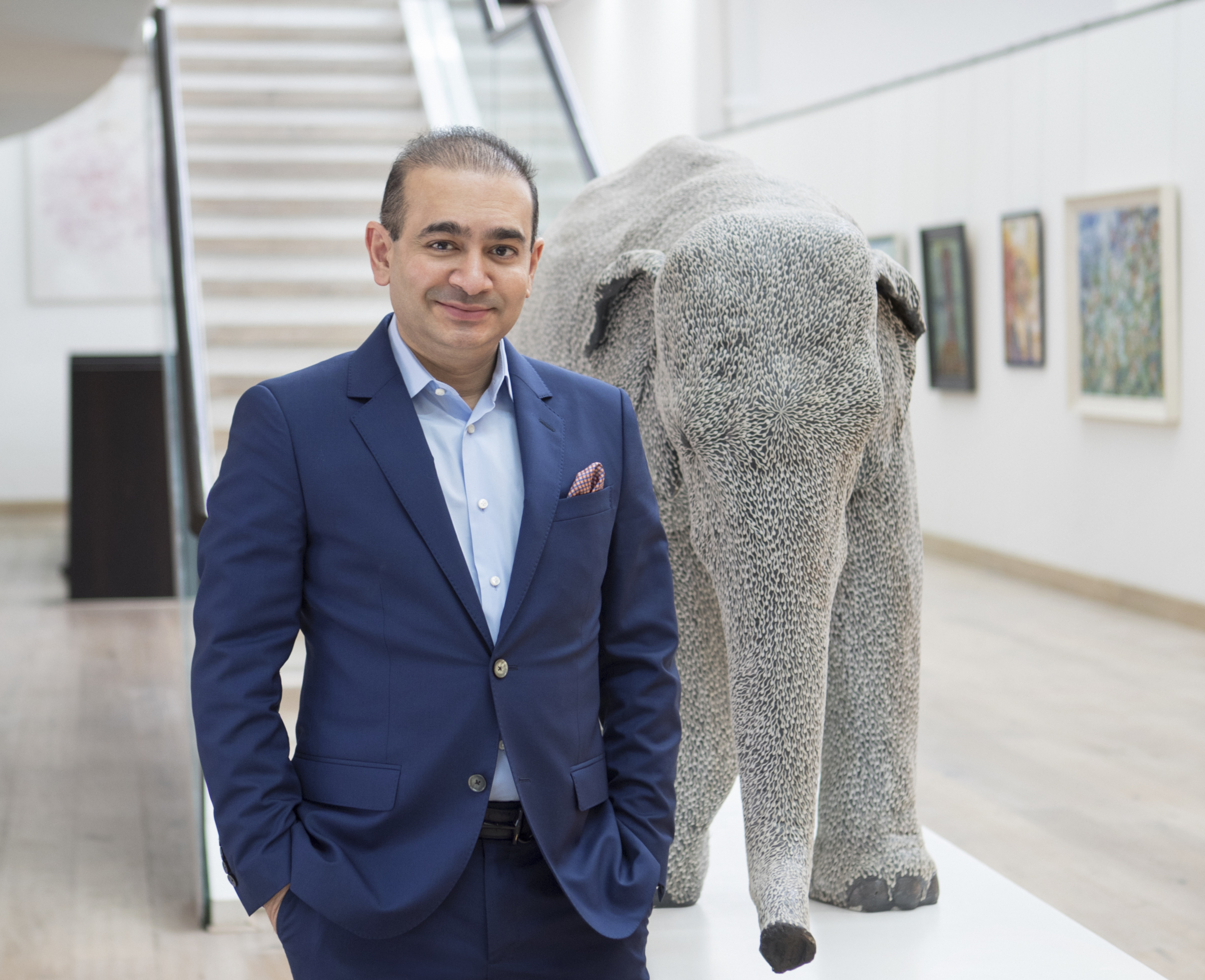Two works of art in Nirav Modi’s office in Mumbai will never change. One is by Amrita Sher-Gil, a pioneer of modern Indian art who studied in Paris and died at age 28. She caused quite a stir in her tragically short life, daring to paint herself nude, finding inspiration in the work of Gauguin. The other, by V. S. Gaitonde, sits above a low black leather couch. That work Modi loaned to the Guggenheim Museum in New York for its 2014 Gaitonde retrospective, “Painting as Process, Painting as Life.”
Modi has been collecting for 20 years and has now amassed over 400 works that rotate between his office and homes. There are early 20th-century paintings from India; modern Indian works by Francis Souza, Gaitonde, Akbar Padamsee, and M. F. Husain; contemporary Chinese works that use traditional ink-and-paper techniques; and pieces by contemporary Indian artists such as Bharti Kher, Subodh Gupta, and Raqib Shaw.
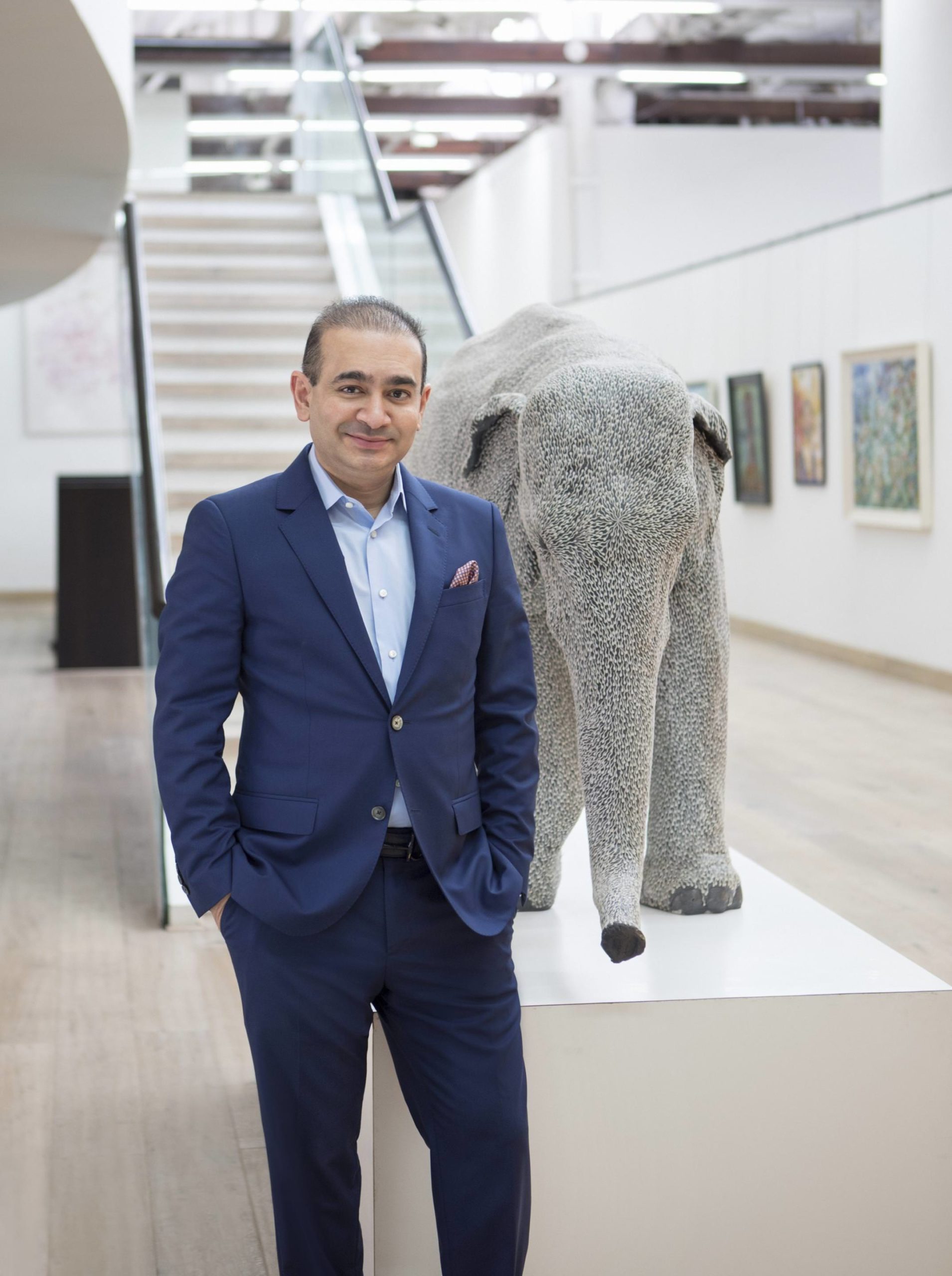
Nirav Modi in his office, in front of a work by Bharti Kher.
The son and grandson of diamantaires, Modi grew up in Antwerp in a household where beauty was valued. You could say he learned the four Cs of the industry (cut, color, clarity, and carat) along with his ABCs. He founded the eponymous brand in 2010, which has gained significant success and recognition in less than a decade.
At the heart of Nirav Modi’s collections is a desire to make women feel spectacular—wearing statement pieces without the usual fuss of weight, worry, and hassle. Even his most sizeable necklaces feel light and effortless against the skin. To achieve that, Modi works to pair extraordinary diamonds with minimal metal and innovative cuts and technologies. His “Embrace” collection of bangles and rings boasts a unique stretching mechanism that allows them to slide on and off the wrist or finger with unparalleled comfort. His “Brocade” collection of wound gold coils feel both weightless and snag-proof. His “Luminance” collection has a nearly invisible setting, allowing for a brighter sparkle that seemingly floats along the neckline.
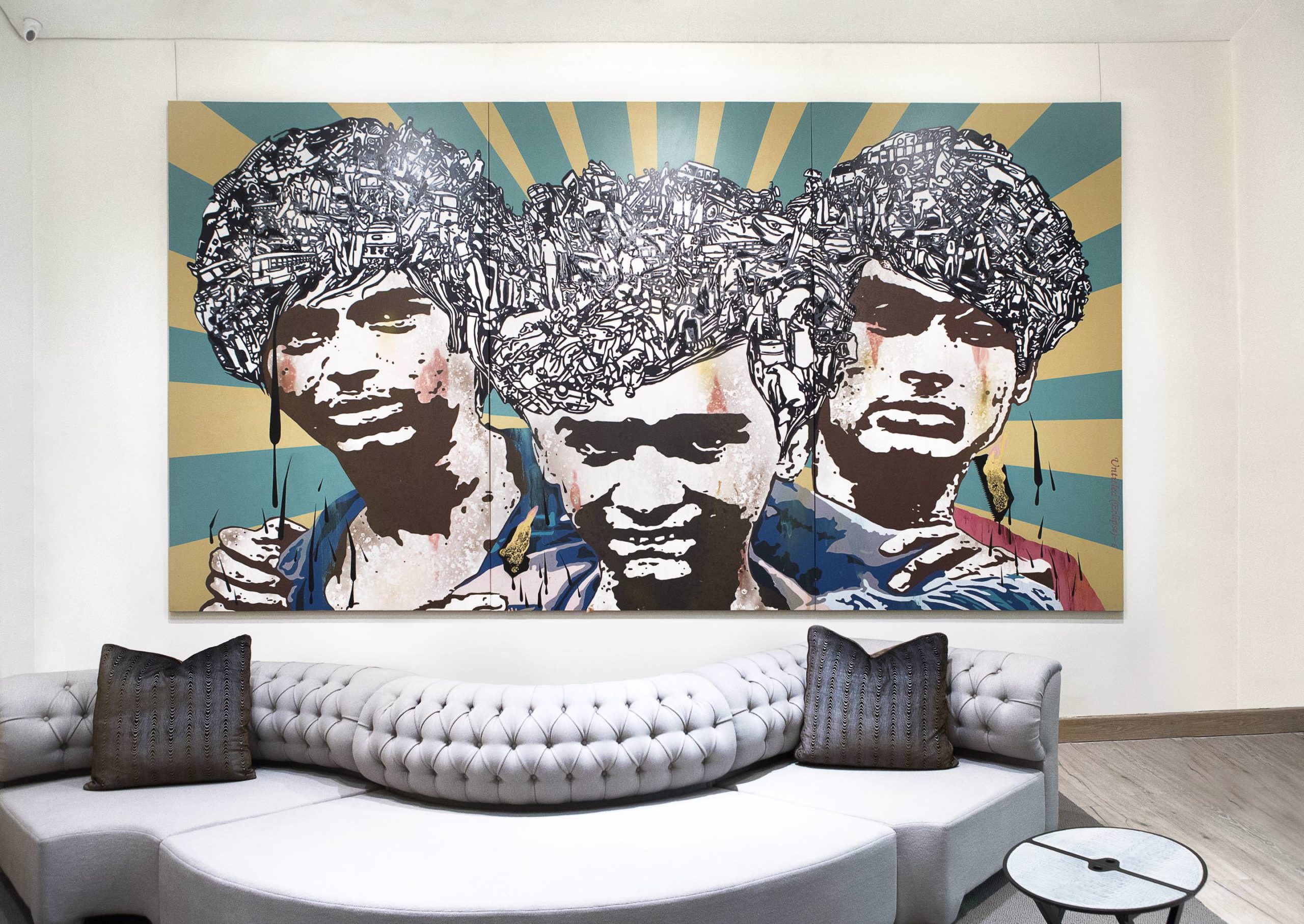
A work by Jitish Kallat in Nirav Modi’s Mumbai office.
Before sitting down with Modi to hear more about his collection, we visited the brand’s design studio, where fluidity, versatility, and creativity act as guiding pillars. Designers are encouraged to seek inspiration in architecture, art, and nature—whether at temples, at museums, or through travel.
WHITEWALL: I wanted to start with an early question. You grew up in Antwerp, your family was in the diamond industry, and your mother is an interior designer. Given that, what was your understanding or idea of beauty growing up?
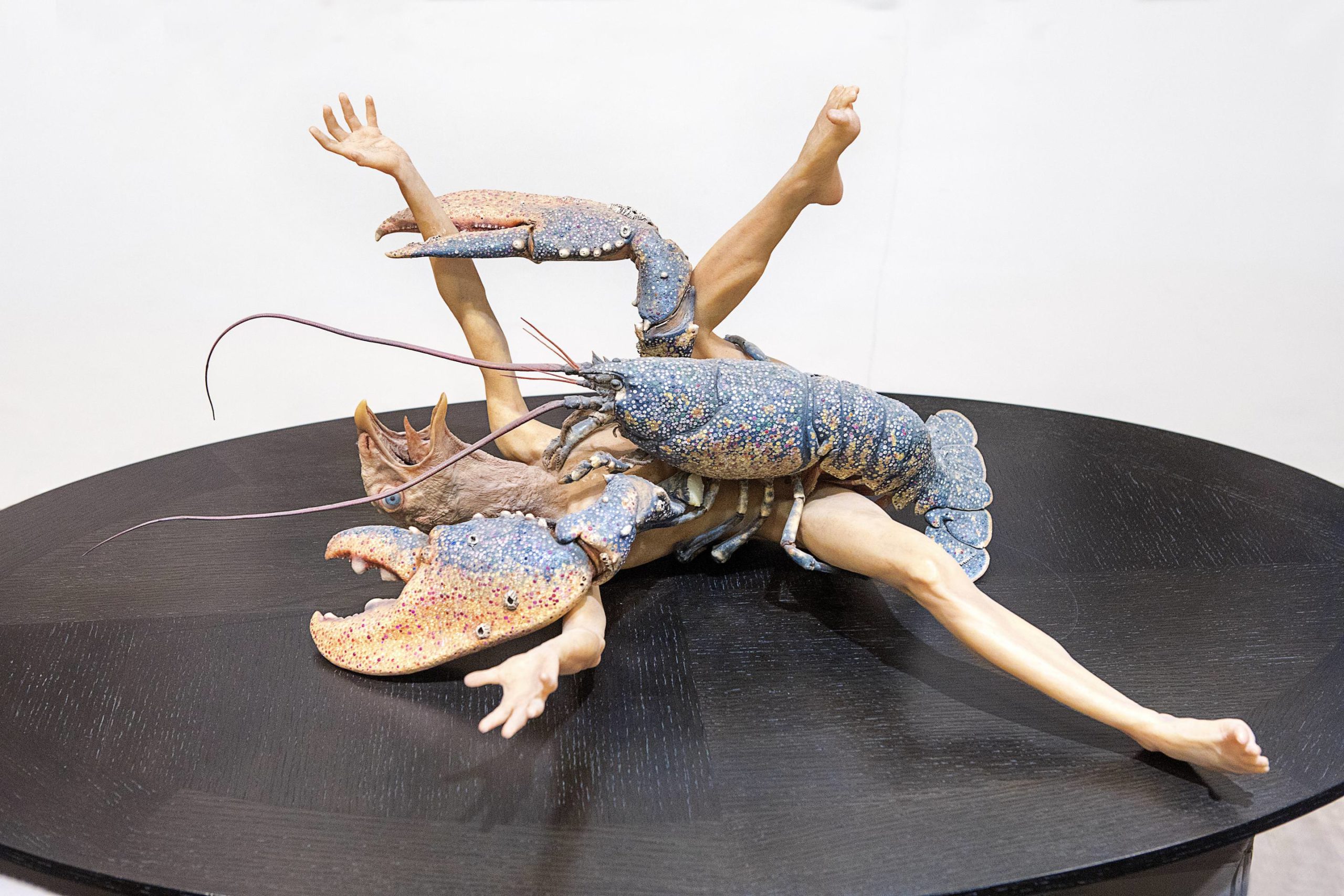
A work by Raqib Shaw.
NIRAV MODI: From a very young age, I was exposed to art and design. I have probably been to every museum in Europe. Whenever we went on a vacation to a city, the first thing my mother would do was drag me to the museum—whether it was the Prado or the Louvre. As a kid, that may not be as pleasurable as you’d like, but now I’m really glad she did that.
WW: Nirav Modi focuses on creating spectacular diamond pieces that are actually comfortable to wear. There’s an ease and versatility to them. How did you arrive at and achieve that concept?
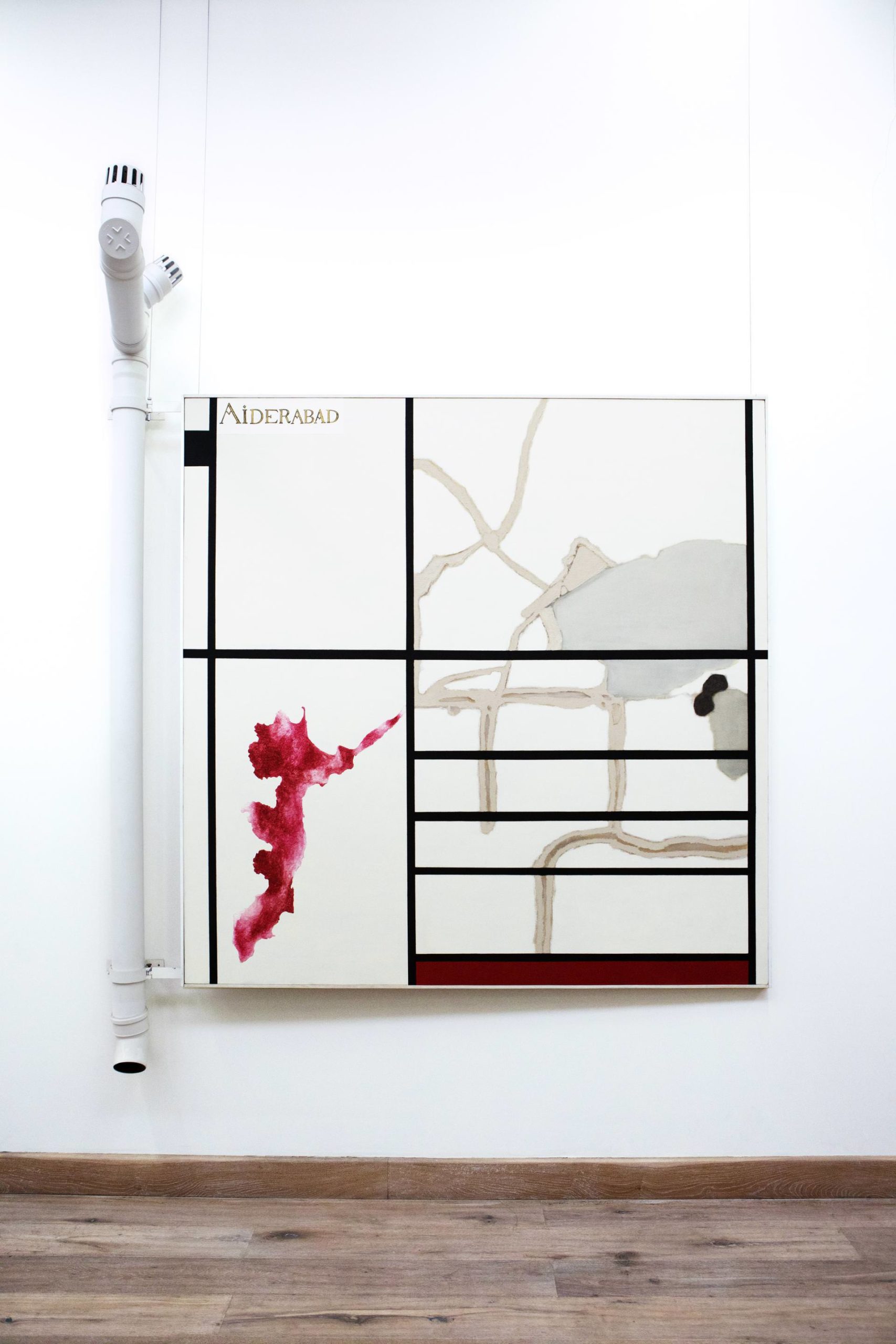
A work by Atul Dodiya.
NM: I wanted to have minimal metal and for the jewels to be very comfortable, supple. I wanted to create statement pieces that were actually going to be worn often. I just don’t see the point of having jewelry that is going to remain in the vault. Like my wife—she loves jewelry, and she often wears a ring that has a 20-carat diamond. As a brand, we want women to wear our jewelry.
WW: And so how do you make them comfortable enough to do so?
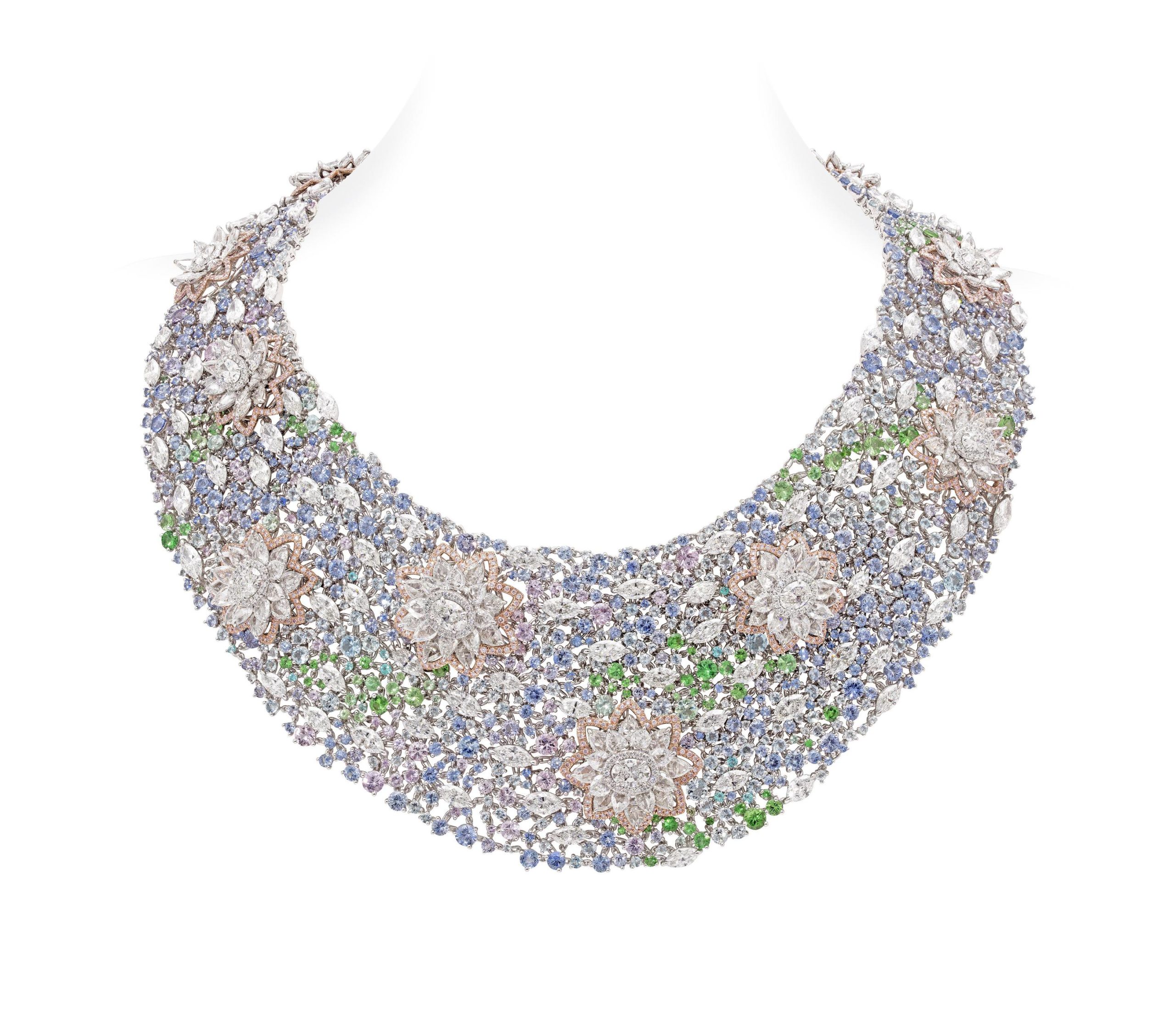
Nirav Modi’s Water Lily necklace.
NM: More important, how do you make them feel spectacular? Clothes, shoes, handbags—these external accessories are all transitory. They will last you a few years. Jewelry will be there with you for generations.
WW: The company has had so much success in a relatively short period of time. Is there an area of innovation you’re looking to expand?
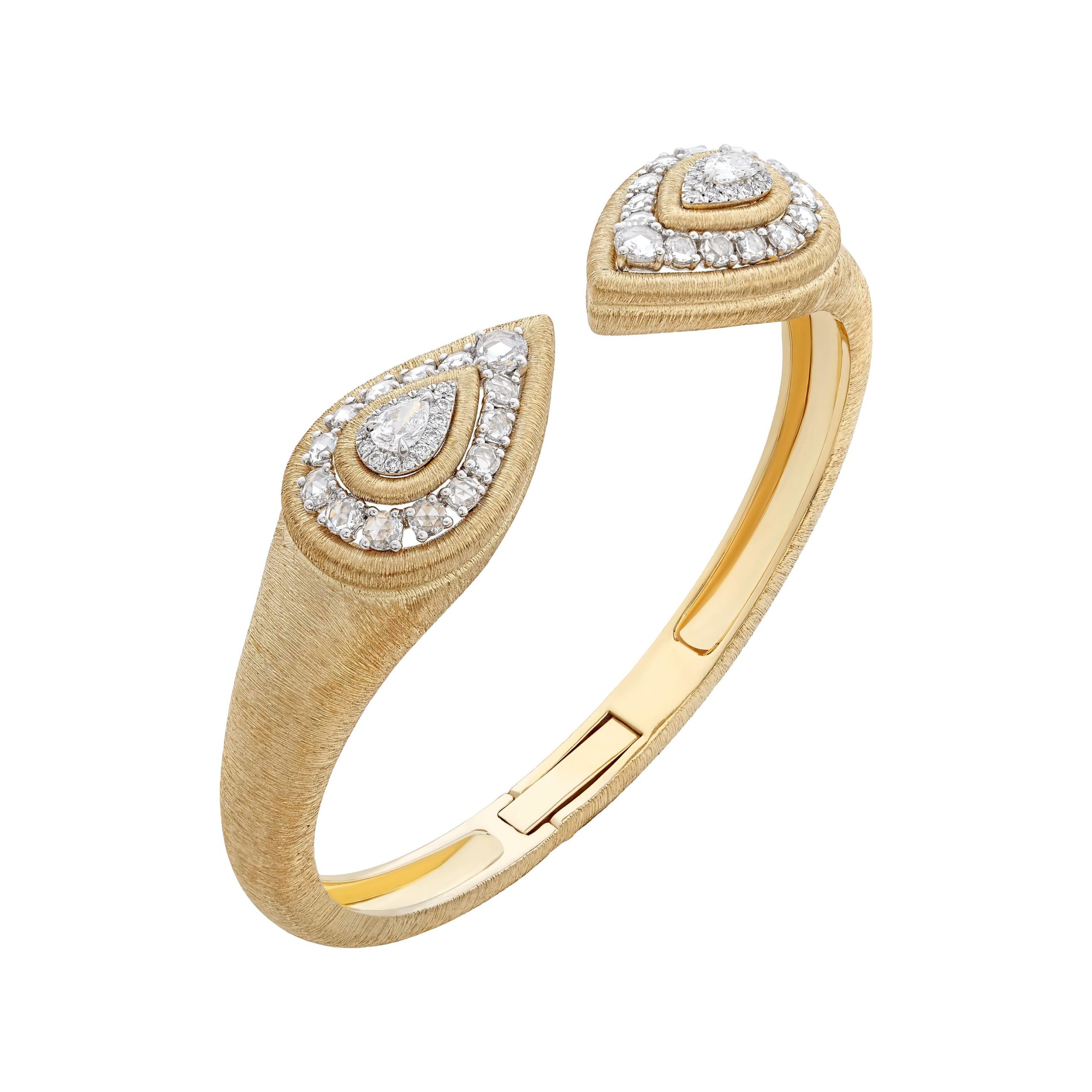
Nirav Modi’s Brocade cuff.
NM: We put a lot of effort into engineering for jewels. The Nirav Modi Embrace® collection took two years to perfect. And some diamond cuts took me 20 years. The “Endless” band was inspired by a jade ring. A real jade ring is carved from a cube of jade. I wanted to do that with diamonds. And the “Endless” band kind of looks like it was carved through one diamond. You don’t see prongs; you just see a band of diamonds.
WW: When did you first start buying art?
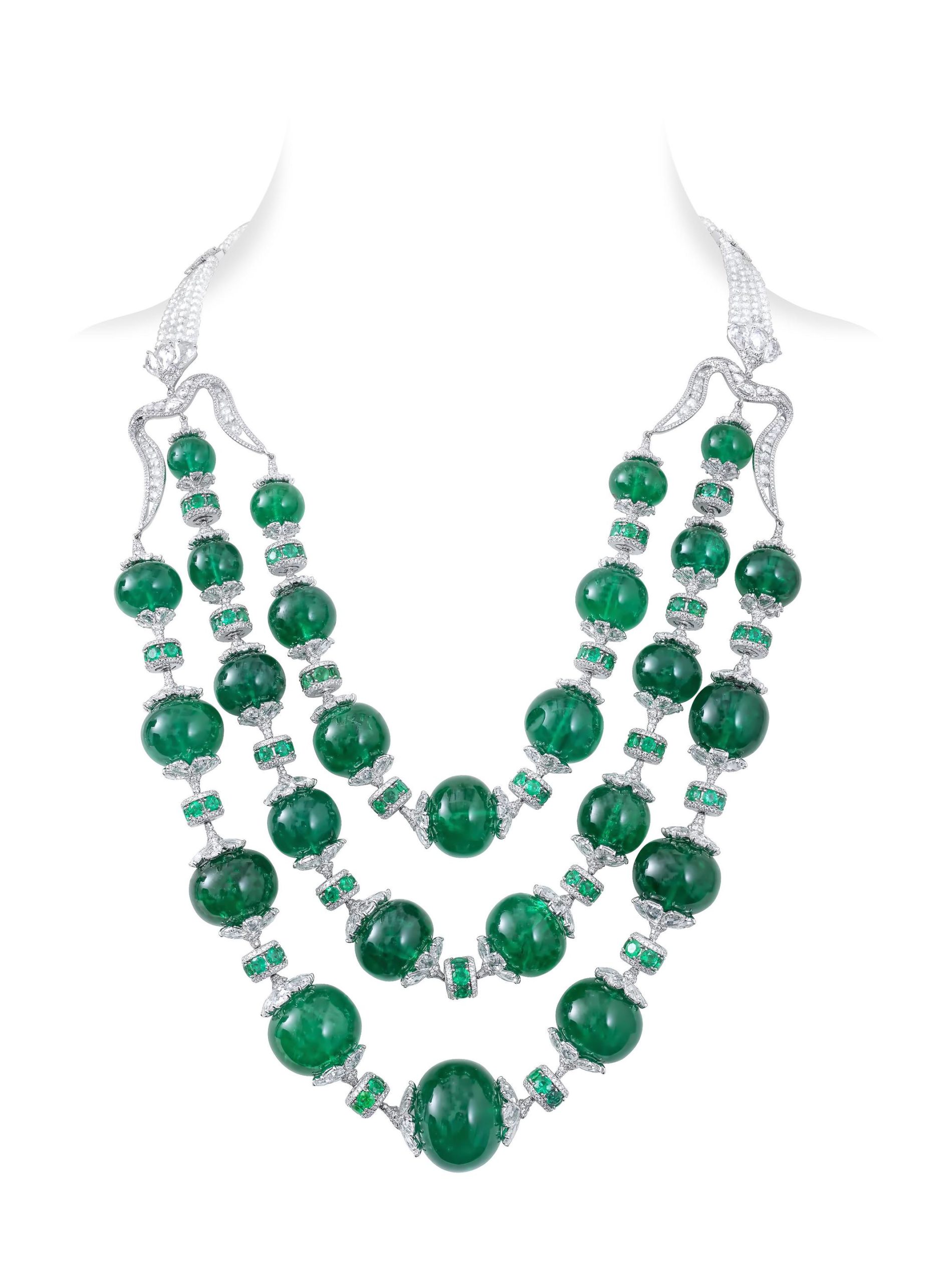
Nirav Modi’s Emerald Maharani necklace.
NM: It was in the late nineties. I’d saved money and the first thing I did was buy art.
WW: Was it contemporary?
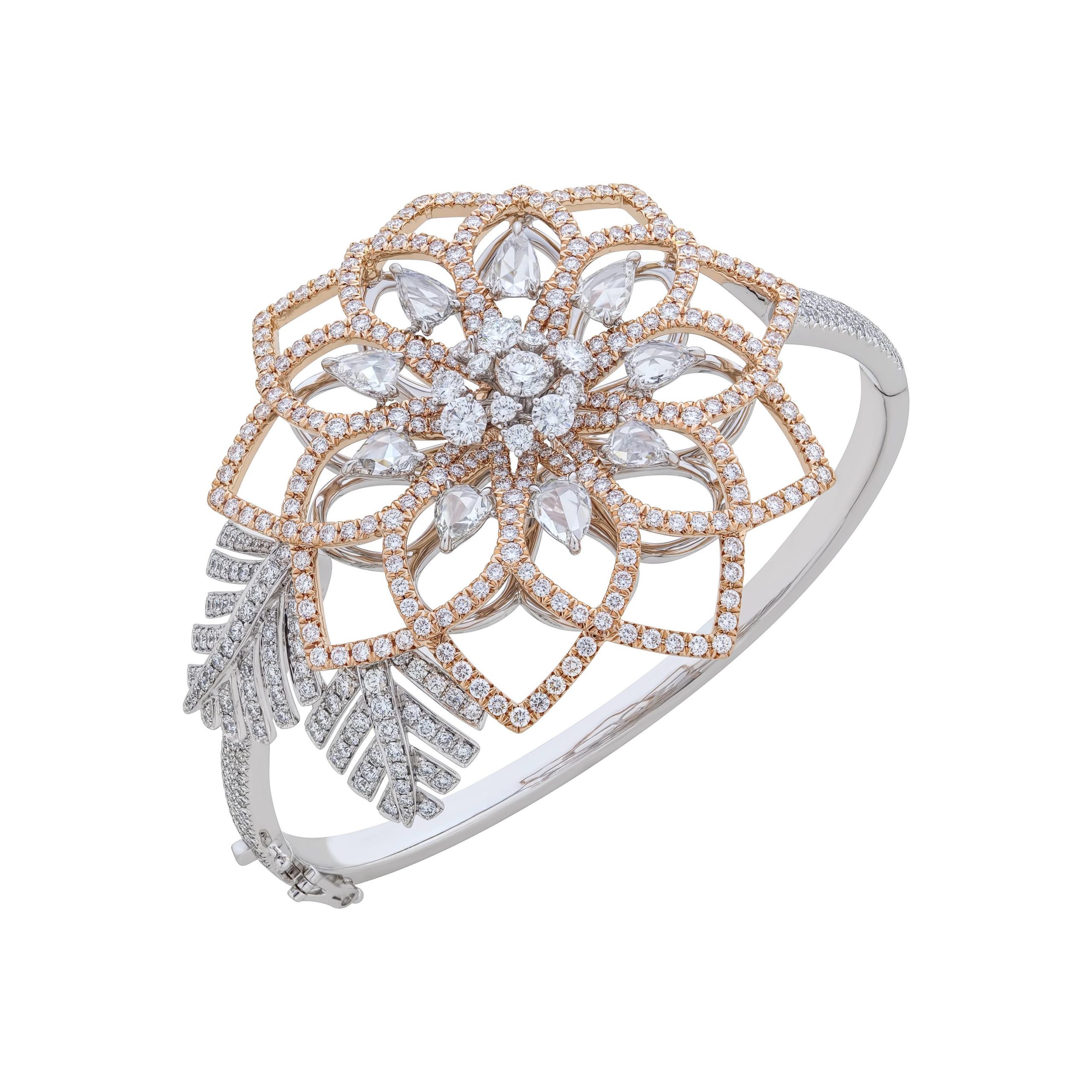
Nirav Modi’s Lotus bangle.
NM: No, the first works of my collection are modern. The Indian perspective of modern is different from, let’s say, an American modern. Indian modern is pre-1970, 1850 to 1970, and contemporary is ‘70s to today.
WW: Were you drawn to a specific medium at first?
NM: Paintings.
WW: Right, you collect a core group of modern artists like Souza and Gaitonde. Did you know about them before you started buying, or was it an education as you went along?
NM: I’ve had an adviser, Mallika Advani, for close to 15 years now. As I started buying more expensive art, I learned more about the artists before the purchase.
WW: Were you interested in having relationship with artists or going on studio visits?
NM: All the works by Chinese artists in my collection, I’ve met every artist. I went to Beijing in 2008 for the Olympics and then went back and visited their studios.
Almost all of the work is ink on paper. Ink on paper is very traditional in Chinese art—it’s been around for hundreds of years. I’m buying something which is made today. It’s contemporary ink on paper. That’s what I collect.
WW: You also have pieces by Bharti Kher, Subodh Gupta, Raqib Shaw. When did you start looking at contemporary artists in India?
NM: I visited Bharti Kher in her studio. I like elephants a lot. Our monogram is an elephant. It’s “nm,” but it’s also an elephant. I saw this piece [now in the office] and started there. I have a piece by Anish Kapoor. And Raqib Shaw—he has so much energy! I went to his studio and realized he doesn’t walk, he just jumps! He bounces around! The first time I saw his work was “Garden of Earthly Delights.”
WW: When you travel, are you finding time to fit in fairs or auctions?
NM: I’ve been to Art Basel, Art Basel Miami Beach, but mostly auctions.
WW: Are there pieces you missed out on that you still remember?
NM: No. I’m quite tenacious. One painting I lost at an auction because I couldn’t afford it. And then five years later, I found out where it was and I was able to purchase it. There are very few works I haven’t been able to get.
WW: The two works in your office here, by Gaitonde and Sher-Gil, you’ve said will always be in your office. What works are at home? When we visited yesterday, we saw a Hussein and then a large painting of an older car.
NM: I love that work. It’s by Desmond Lazaro. It’s an Ambassador. Until 20 years ago, there were only two car models in India. There was a Fiat, just one model, and an Ambassador. So it’s very iconic. You don’t see them anymore, but it’s very iconic.
WW: Tell me about Sher-Gil. She sounds like a fascinating woman.
NM: I really love this work. There are only thirty or so of her works in private collections. All the rest are in museums. And her grandson did a series with photographs of her and her paintings. She died so young and was incredibly bohemian. She had relationships with men, women . . . and we’re talking about in India!
WW: You did a high jewelry piece inspired by Monet’s “Water Lilies.” Do you think we’ll see more art inspiration make its way into the Nirav Modi collections?
NM: I had a very large tribal art piece here, and I made a high jewelry cuff based on that. The cuff looked like it came out of the painting. Not like it was inspired by, and only intellectual people could see the connection—it was really coming right out of the painting. And if you see the “Water Lilies,” it’s the same; it’s literal. I’m not a subtle person.
WW: Would you consider collaborating with a contemporary artist?
NM: The door is open. For me, I never say no.
This article is published in Whitewall‘s 2017 Design Issue.



